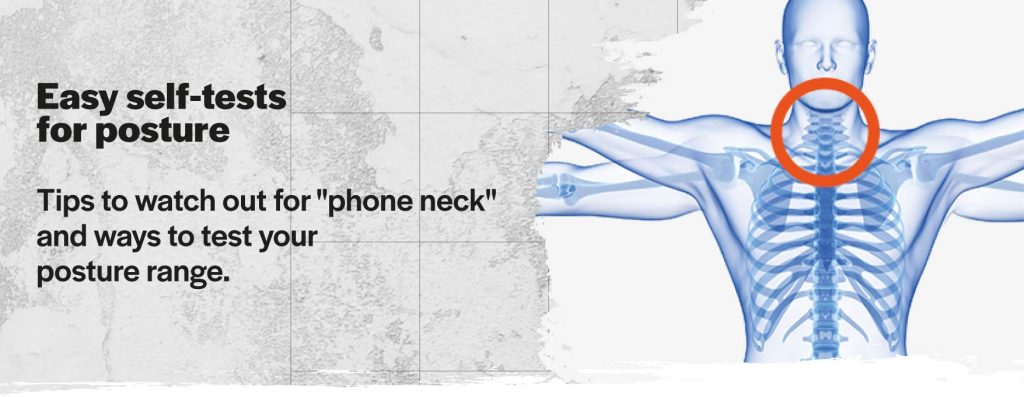Posture is how you “hold up” your body when doing any activity, even sleeping. It doesn’t have a specific definition: you can somehow imagine it as the equivalent of your mental attitude, but on the outside. You can have a “proud” sitting posture, with your ribcage projected towards your laptop/book, or a slouched, “sad” curved posture. It is really easy to identify which of the two is the better one… Or is it?
…let’s talk science!
Postural muscles
If we define posture as your position in space in response to a certain task, technically every skeletal muscle is a postural muscle*. However, more realistically, there are muscles that make a much bigger difference in the way you stand, sit, run, etc.
- The core: I’m sure you have heard of this before. Your core is basically the centre of your body, your abdomen, your spine and sides. The role of these muscle groups is to work synergically to initiate powerful movement, transferring momentum towards the limbs. Even when in a static position, your core is what holds you up. Try to sit, raise your legs from the ground and arms behind your head. It’s only your core now!**
- Neck: your neck muscles are the unsung heroes of posture, holding up your mighty brain and head the whole day! The skull is very heavy, accounting for 5kg in an average human. All of it balanced on 7 vertebrae, kept upright from a group of teeny tiny muscles. But when we account for the laws of physics, those 5kg become a lot more when we tilt our heads, straining the whole system.***
Bad posture?
I am going to blow your mind by saying that good or bad postures don’t exist. The human body is made for movement, and as long as we fulfil this purpose you can assume every position and posture you want: actually the more varied the better. Yes, even slouching is not wrong. Once again, try to sit and now hold your back and neck as upright as you can, while contracting your abs. I bet you’ll feel tired after 3 minutes. Does that mean your posture is wrong? Not necessarily.****
What DOES exist and is very real is bad HABITS. For instance, having your chin down looking at an iPad or phone for hours every day will eventually elongate the muscles at the back of your neck and shorten the ones at the front, making it extremely uncomfortable or sore to keep your head straight*****. And that’s where the damage can be identified.
If you are not able anymore to assume comfortably (at least for few minutes) any desired posture and position it is then time to take serious action. Some examples can be found in feeling very hard or impossible to pop your chest more forward than your shoulders; your neck being sore when looking up to the stars for more than few minutes; pressing or carrying something overhead without curving your lower back; finding uncomfortable to lie on your front on an uneven surface (e.g. on the beach).
All of the above (and more) indicate that your postural muscles are not capable to model your core to assume any posture you want, pointing at some muscular imbalances. I am not saying that it should be EASY to assume any posture, just possible for at least some minutes.****
As a matter of fact, during your teenage years all of this becomes even more important. In the puberty stage of life you are a superhuman, capable to mould your bones and muscles so quickly that changes could be seen in just a few weeks! Just keep in mind that those effects will be lasting way past your youth: so let’s make sure you create the right habits!
In addition to that, remember: your posture is the business card of your body. It could even mess up with your hormones (extremely important during growth and development)******, which may or may not seem relevant for you, but what definitely matters is that over time it will change the way YOU see yourself. An open posture, neck up and projecting your body out is shown to be help with mood and self-esteem!******* Give it a try, what have you got to lose?
Posture and sport
Any sport has its own characteristics, and it is normal to develop specific muscles over others depending on what you play. However, remember that you will still maintain a way better functionality if the balance is kept as much as possible. Plus, it’s an important factor for injury prevention and longevity in sports (hyperlink to come back better?). Take as an example a road cyclist. He/she probably maintains a low aerodynamic position for hours a day, but that doesn’t mean that he/she needs to grow a hump for the rest of his/her life!*******Postural imbalances only increase fatigue, pain and risk of injuries.
Are your postural muscles still in check?
These are some quick tests you can do at home to assess your general ability to assume varied postures. Bear in mind, perfection is not of this world. Nevertheless, we can see how close we can get to it!
Reverse plank:
Hold this position for 60 seconds and test the following:
Chest remains higher than your shoulders ✓
Body stays in a straight line from toes to head ✓
Shoulders are overall unaffected (don’t feel sore) ✓
“Superman” hold
Hold this position for 60 seconds and test the following:
Balance on hips/lower abdomen only ✓
Body forms a continuous curve from heels to hands ✓
Chest and knees quite far from the ground ✓
Squat therapy

Perform 10 slow reps of this exercise as close as possible to the wall and test:
Arms straight and pointing up ✓
Back/chest upright ✓
Are you squatting below parallel? ✓
References
*Widhe, T. (2001) ‘Spine: posture, mobility and pain: a longitudinal study from childhood to adolescence.’ European Spine Journal, 10, 118-123.
**Roffey D.M., Wai E. K., Bishop P., Kwon B. K., Dagenais S. D. (2010) ‘Causal assessment of awkward occupational postures and low back pain: results of a systematic review.’ The Spine Journal, 10, 89-99.
***David D., Giannini C., Chiarelli F., Mohn A. (2021) ‘Text neck syndrome in children and adolescents.’ International Journal of Environmental research and public Health, 18, 1-14.
****Edmondston S. J., Chan H. Y., Ngai G. C. W., Warren L. R., Williams J. M., Glennon S., Netto K. (2007) ‘Postural neck pain: an investigation of habitual sitting posture, perception of “good” posture and cervicothoracic kinaesthesia’. Manual Therapy, 12, 363-371.
*****Damasceno G. M., Ferreira A. S., Nogueira L. A. C., Reis F. J. J., Andrade I. C. S., Meziat-Filho N. (2018) ‘Text neck pain in 18-21 year old young adults’. European Spine Journal, 27, 1249-1254.
******Li, Sirui (2010) ‘Some postures may affect hormones’ [online] https://www.thecrimson.com/article/2010/9/23/cuddy-hormone-people-feel/ The Harvard Crimson.
*******Asl N. S., Savucu Y. (2014) ‘The relationship between secondary school students posture disorders and shyness.’ Journal of Physical Education and Sport, 14(2), 271-276.
********Barrett E., O’Keefle M., O’Sullivan K., Lewis J., McCreesh K. (2016) ‘Is throracic spine posture associated with shoulder pain, range of motion and function? A systematic review.’ Manual Therapy, 26, 38-46.
Further reading
Lewis J. S., Green A., Wright C. (2005) ‘Subacromial impingement syndrome: The role of posture and muscle imbalance.’ Journal of shoulder and elbow surgery, 14(4), 385-392.
Ribeiro D. C., Aldabe D., Abbot J. H., Sole G., Milosavljevic S. (2012) ‘Dose-response relationship between work-related cumulative postural exposure and low back pain: a systematic review’. Annals of Occupational Hygiene, 1-13.





